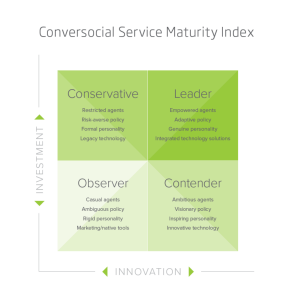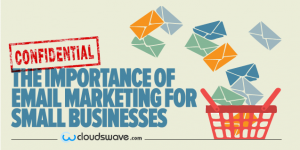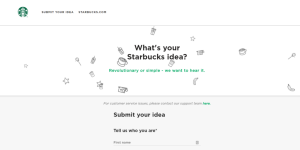
So, you’ve got a website (or you’re in the process of getting one) — great!
Now it’s time to sit back and watch the business roll in, right?
I mean, that’s how it works in the movie — he builds the baseball field in the middle of nowhere, and like magic, ghostly baseball players show up and cars line up for miles to see them play.
Unfortunately, you won’t have James Earl Jones or cornfield magic on your side.
You can build the most amazing, astounding, awe-inspiring, breath-taking, ass-kicking website in the history of websites, and if you’re an unknown brand…
No one will visit it.
Or worse, only your friends and family are going to visit. You’ll have comments on your blog from mom and grandma about how they’re so darn proud of their little Boopie—
But no business—no one who wants to give you money.
You can’t just build a website and throw it into the great wide world of the internet—you’re gonna need a little bit better of a plan than that.
Don’t Plow Your Fields Without a Plan
Imagine a farmer who goes down to his field, picks a random direction, and starts planting seeds.
But he doesn’t plant in a line—he just kind of buries them as fast as he can so he can get back to milking cows.
And he’s planting winter wheat in the actual middle of winter because he didn’t bother to learn the best time to plant winter wheat.
How do you think that farmer’s crops turned out? About the same as a website you didn’t bother to plan.
If you don’t have a plan to get people to your website, your investment is going to turn out quite similar to the farmer’s.
A traffic plan is a surprisingly often overlooked part of the website creation process.
If you can’t get the right people to your site, the time you spent on the website is wasted (not to mention the thousands of dollars you spent building it).
You need a plan. Fortunately, we’ve got a few of the building blocks here to help you.
Understand, this is not a comprehensive list. Traffic plans can be incredibly detailed and convoluted, but this is a start.
Here’s some of the most common components of a website traffic plan:
Search Engine Optimization (SEO)
Setting your site up in a way that it will display in search engine results when people search for keywords related to your business, or SEO, is how most people assume they’ll get visitors to their site.
What you might not know is the incredible amount of work this can take—seriously, it probably takes twice as much time as planting and harvesting winter wheat.
So, how can you use the magic of Google to bring that line of people to your online baseball field? Our friend Pam Aungst breaks down the basics of how SEO works and what you can do with your own site.
Just like baseball, SEO is a long game — getting results is going to take time.
Paid Search
Another option for driving traffic to your website is paid search. Like SEO, this method pairs your website up with relevant keyword searches — the difference is, with paid search, your site is displayed in the margins of search engine results pages (SERPs), and you’re paying to be placed there.
The biggest problem with paid search? Over the years, many people have trained themselves to ignore ads online. It can yield results, but it’s only one component in the plan.
Referrals From Other Sites
This all depends on the type of business you run. For example, if you are a distributor or rep, you may rely on website traffic from manufacturers’ sites. You might also plan to get traffic from affiliates if you’ve chosen the affiliate route.
However, most small businesses can’t rely on too many referrals from other websites—you have to form relationships with other businesses online to get them to refer traffic to you.
Social Media
Maybe you plan to use social media (whether paid or organic) to drive traffic to your website. I have one piece of advice for you when it comes to social media—it takes a lot of work (and a professional) to really do it right.
For the vast majority of businesses, you’re going to have to invest in social media if you want to see a return.
And just cause I’m feeling nice, here’s an awesome bonus article on increasing your Facebook traffic using a combination of boosted and organic posts.
Offline Methods
Of course, there’s also things you can do offline to send people to your website, traditional methods of marketing like ads, brochures, business cards handed out at networking events, or speaking engagements. These can (should) also be viable parts of your website traffic plan.
If you’re still not sure what methods you want to use, watch our video on how to come up with a website traffic plan.
What Does Your Cornfield Look Like?
So, how do you get traffic to your website?
There’s no magic sequence of events or friendly ghost voice in your head to guide the way—but there is a wealth of internet resources at your disposal. With a little bit of time, you can gain a beginner’s knowledge of this subject and start driving traffic to your website.
However, not every method is the best for your business.
Your unique website traffic plan is determined by your audience, the people who you actually want coming to your site.
It’s just as important to push away the wrong people as pull in the right people. If you try to please everybody, you end up pleasing nobody.
Those audience profiles we worked on just keeping on cropping up (pun intended), don’t they?
Let’s go back and look at who it is you’re trying to attract, who you want to sell to, and let these answers build the plan for us. How does your ideal audience use the internet to find information? Where do they spend their time? Where can you cross paths and capture their interest?
You’ll also want to consider your monthly budget (nothing is free — if it doesn’t cost you money, it will cost you your time) and set some initial goals for your site.
Digital & Social Articles on Business 2 Community(28)






